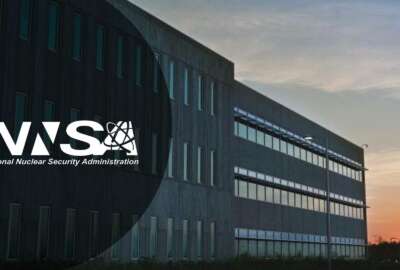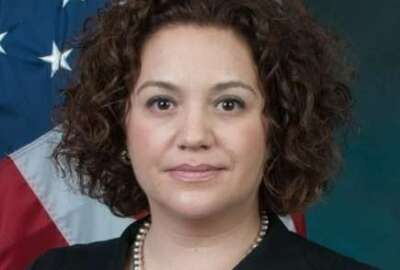This nuclear agency is making a lot of underground investment
The National Nuclear Security Administration (NNSA) has a difficult mission. It must constantly assess the condition of the nation's nuclear warheads. Explosive...
The National Nuclear Security Administration (NNSA) has a difficult mission. It must constantly assess the condition of the nation’s nuclear warheads. Explosive testing has been banned under international treaties for decades. It’s been spending billions on new instruments deep underground. The Government Accountability Office (GAO) has found that the NNSA needs to tighten up its program management. For more, Federal Drive with Tom Temin spoke with the GAO’s Director of Natural Resources and Environment, Allison Bawden.
Interview Transcript:
Tom Temin This is a really interesting project because they are putting in very complex, large size physically instrumentation, a thousand feet down underground. Just tell us what the project is all about, first of all.
Allison Bawden Well, NNSA is building two new instruments. One is named Scorpius and the other is named Zeus. And they are designed to measure sort of new aspects of plutonium when it is compressed by high explosives. So it sort of mimics what happens in a nuclear weapon, but it doesn’t provide substantially any yield to exceed those treaty limits that you were discussing. And these are brand new instruments leading edge science and, as you said, very complicated in and of themselves, but also will be placed well underground.
Tom Temin And what is the facility that they are in?
Allison Bawden It’s a tunnel facility called the U1A complex out at the Nevada national security site. It’s a bit north of Las Vegas. Used to be known as the Nevada test site. It’s essentially a mine and there is experimentation that goes on there with high explosives and nuclear material, but in a very safe and contained environment.
Tom Temin Right. So are the warheads individually brought there from time to time to be looked at by these instruments, or how does the program operate? Because the warheads are scattered all over the place.
Allison Bawden Sure. So the warheads themselves are not brought there, but rather a device, a test device, very, very small scale and generally uses plutonium may also use surrogate materials and high explosives. But these experiments are done in controlled and scaled ways that don’t allow them to go what’s called critical. And they don’t create nuclear yield. And therefore, they’re called subcritical experiments.
Tom Temin All right. And then the NNSA has a special subcritical experiment’s enhanced capability, as I said that backwards, the ECSE program specifically to deploy these instruments then, correct?
Allison Bawden That’s correct.
Tom Temin And one of them, it’s an x ray type of machine.
Allison Bawden Yes. It basically is a very high powered x ray. It can see very, very dense materials. And what’s special and new about this particular machine is that it can take as many as four pictures. So it kind of creates like a stop motion film where as prior instruments have only been able to take one image.
Tom Temin And give us a sense of the scale of dollars involved here. These are not $100 things or $1,000 things that would go into a dentist’s office.
Allison Bawden They are not. Altogether, the program is expected to cost about 2.5 to $2.6 billion. And the schedule expectations are for the machines to be finished by about 2030.
Tom Temin And the review of this program of the enhanced capabilities for subcritical experiments, this was mandated in the National Defense Authorization Act, I think, last year, correct?
Allison Bawden That’s right. That’s right. And, you know, Congress will take an interest in anything that has that high a price tag.
Tom Temin All right. And so what were you looking at here?
Allison Bawden Really, we were looking at the justification for the program and how well these various projects to build these pieces of equipment and to install them underground, how well those efforts are being managed. And the one machine, actually, the larger one, Scorpius, is on track. It’s being managed under a fairly rigorous management approach. It’s been using independent cost estimates, independent technology readiness assessments, all those good, best practices that we love at GAO. The Zuse machine had been managed under a less rigorous regime, really, one that’s more used for R&D approaches. And that instrument has faced some challenges, particularly around integrating the build of the device with the infrastructure needed underground at that tunnel complex. And long story short, when they determined the device’s final size, they realized that the tunnel borer that they had would not be wide enough for the machine.
Tom Temin So it’s almost the opposite of building a boat in the basement that you can’t get out. They built a machine outside. They can’t get in.
Allison Bawden That’s right.
Tom Temin We’re speaking with Allison Bawden. She is director of Natural resources and environment at the Government Accountability Office. And I guess my question is, why were not both instruments, since they are codependent, to actually carry out the subcritical experiments managed under a single program management?
Allison Bawden The department deals with managing these projects as idividual efforts and they are not generally integrated. And that’s been one of the things that we’ve been recommending for a little while, is that when you have programmatic efforts, multiple projects that are all required to be coordinated to achieve a common objective, that there should be a more integrated planning approach. And I think this Zeus and Scorpius effort is sort of an example of what happens when that integrated approach isn’t implemented.
Tom Temin And who does the build here. I mean, how does this get done in terms of contracting and acquisition and all that part of it?
Allison Bawden So the management and operating contractors who run the various scientific, technical and engineering sites around the country that are part of the nuclear security enterprise are collaborating on these pieces of equipment. So Los Alamos National Laboratory, Lawrence Livermore National Laboratory, Sandia, they are all collaborating on these. And the contractors at the Nevada national security site are responsible for the infrastructure in that mine complex where the equipment will be installed.
Tom Temin All right. And so what were your recommendations here? You said one of them is behind schedule. Plus, I imagine it’s costly talking about a shaft that’s a thousand feet down into the ground. That’s got to be expensive to widen that.
Allison Bawden Yes. And in fact, they need to bore a new hole for it rather than widen it. And so what we suggested was that NSSA apply that more rigorous management approach to the Zeus project and ensure that effective risk management structures are in place and effective integration between that infrastructure side of the project and the actual building of the instrument.
Tom Temin And are these instruments like the size of a refrigerator, the size of a minivan? Give us a sense of what we’re dealing with.
Allison Bawden The size of a football field. They’re very, very large. And this mining complex mine underground has several mine shafts with pieces of equipment in it that are really quite large. These are not things that you could fit in your house.
Tom Temin So it sounds like, though, given an instrument that big, they would take it down piece by piece and assemble it down there?
Allison Bawden That’s correct. It is built in cells and there’s some testing of the equipment above ground to make sure that they’re not going to bring lots of things underground that then don’t work. So they’re sort of a test bed above ground that’s being built in Nevada. But yes, it comes down in pieces and is assembled within the hole.
Tom Temin And by the way, did the GAO, did you get down that shaft and just see what’s down there?
Allison Bawden I did. I did. It is a very long, dark elevator ride, but it is a fascinating facility. And once you’re down there, you really wouldn’t know that you’re underground.
Tom Temin It’s big under there. It’s like the Luray Caverns only scientific.
Allison Bawden It is very big. It’s very well lit. And there is a tremendous amount of ventilation.
Tom Temin Wow. Do people come and go daily? I mean, they don’t live down there for weeks on end or anything.
Allison Bawden It is a work site just like any other scientific facility. And so above ground there are restrooms and parking and all that kind of thing.
Tom Temin Wow. So is there like a Starbucks down there or do you have to go back up to get coffee?
Allison Bawden There are refrigerators. I’m sure people bring their lunches, but there is no Starbucks in sight.
Tom Temin All right. So the NNSA generally agreed with your recommendations to apply these new management techniques or program management techniques. Not new, but the tried and true ones, to, Zeus is the one that’s off course.
Allison Bawden Yes, they did concur with our recommendation and let us know that they intend to have that more rigorous management approach in place by September 2025.
Tom Temin And ultimately, you said Congress is looking at the justification for the project. They’re still behind it. It sounds like it’s too late to not do it. And sounds like as the bombs themselves age, this type of analysis is going to be needed more and more.
Allison Bawden Yes, Congress is certainly behind the project. It’s been supported over the years in terms of appropriations. I think, you know, one of the interesting things for Congress has been the schedule for completing these instruments and ensuring that they are ready to produce data on time for the programs that need that data. So really, the schedule concern is around completing the instruments so that they can begin the experimentation that will support the overall needs for maintaining the stockpile.
Copyright © 2024 Federal News Network. All rights reserved. This website is not intended for users located within the European Economic Area.
Tom Temin is host of the Federal Drive and has been providing insight on federal technology and management issues for more than 30 years.
Follow @tteminWFED






